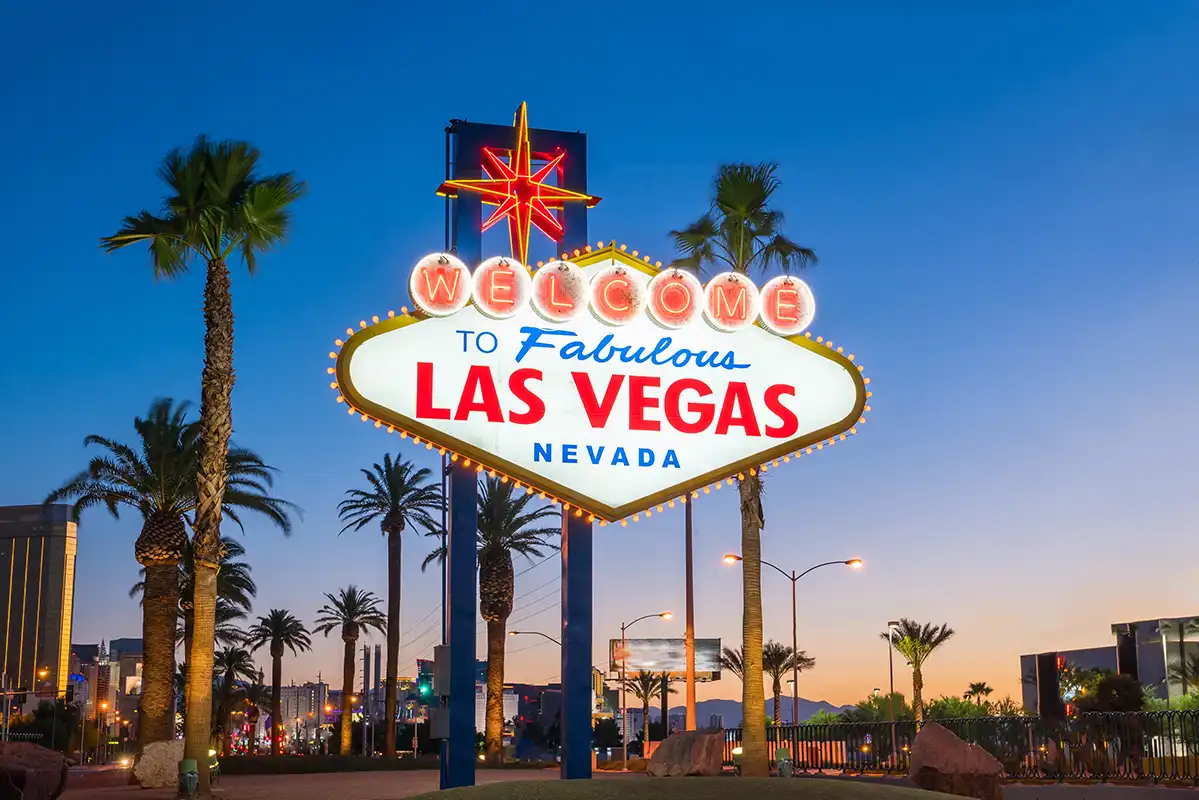With just days until the Big Game, LightBox digs into the data to understand why commercial real estate investors, tourists and sports fans are increasingly flocking to the host city of Las Vegas.
This internationally recognized travel and entertainment destination is no longer just the top U.S. gambling destination or the “Marriage Capital of the World.” The city has diversified its economy in recent years to embrace new sports teams and entertainment venues, along with a record number of multifamily renters and the e-commerce warehouses that support them.
The recently built Allegiant Stadium will host the first Big Game in Nevada’s history, a battle between the returning champions and San Francisco. There is plenty of buzz about this game, of course, but not just about the blocking and tackling.
Taylor Swift’s attendance at 12 Chiefs games this season in support of Travis Kelce has boosted viewership and brought legions of new fans into the game. Her attendance at the Big Game could elevate TV viewership and expand on the positive economic impact already in play in Las Vegas.
The stadium is just one important part of a long list of economic wins for the Las Vegas community. Built in 2020 for the newly transplanted Raiders, with its legion of diehard fans, the stadium has a 65,000-seat capacity that could be extended to around 70,000 for the Big Game.
According to LightBox Vision, statistics on the stadium are impressive: The multi-purpose, domed structure sits on a 2.5 million-square-foot lot and has a total market value of $1.67 billion.
Those lucky enough to score tickets to Sunday’s game can look beyond the cheering crowds to the famous 100-plus hotel district known as The Strip, the largest U.S. hotel market by room count. Those hotels attract an international audience year-round and recorded nearly $220 million in room revenue for one new event in 2023 alone. The city’s first Formula One Grand Prix race, which is under a 10-year contract, also boosted gaming revenue to $1.37 billion during the race period.
The Strip also features the world’s #2 and #3 largest hotels – the Venetian, with 7,092 rooms, and the MCM Grand, with 6,071 rooms. Room rates along The Strip are expected to reach an average price north of $800 per night during the Big Game weekend. According to Visit Las Vegas, the overall hotel market in Las Vegas includes nearly 300 hotels and resorts to choose from, totaling more than 151,000 rooms.
Although the returns for that type of investment may largely depend on whether your sports teams win or lose, and how luck pans out at the tables, the odds for longer term, higher stakes investments in Las Vegas real estate are increasing. In a different twist on a common theme: What happens in Vegas, in terms of its increasing popularity, doesn’t necessarily stay in Vegas.
Las Vegas ranks in the top 10 U.S. markets for investment in retail, hotel and industrial assets and among the top 20 markets to watch for overall real estate prospects in 2024, according to the Emerging Trends in Real Estate® 2024 report by PwC and the Urban Land Institute.
With a population of nearly 3 million, Las Vegas offers a low tax climate for businesses and lower office vacancies, despite current headwinds in the office sector. While the city has developed a more diversified local economy, it remains dependent on the travel and convention industries and is also vulnerable to any slowdown in the gaming industry or a large labor strike event.
Commercial Real Estate Data for Las Vegas from LightBox VisionSM and RCM®
According to LightBox RCM data from 2022-2023, Las Vegas is in the Top 30 MSAs for commercial property listings. There were more than 17,000 buyers interested in the Las Vegas-Henderson-Paradise MSA. Additionally, there were nearly 10,000 Non-Disclosure Agreements executed by buyers. The top 5 asset types based on investor acquisition criteria include land (for future development considerations), multifamily, industrial, retail and hospitality.
Other data points for the Las Vegas metro include:
- More than 110 commercial real estate loans are coming due within a five-mile radius of the stadium over the next 24 months.
- In excess of 1,200 commercial properties were sold during the last 24 months.
Based on output from the EDR/LightBox ScoreKeeper model:
- Las Vegas recorded a 15% annual increase in Phase I ESAs in Q4 2023 compared to the average 10% decline for primary metros.
- Approximately 1,600 properties in the Las Vegas MSA underwent Phase I ESAs in 2023. That figure is 19% below 2022 levels, but is nearly recovered to pre-pandemic average volume.
LightBox Scorecard
The LightBox Big Game Scorecard compares the final two cities sending teams through a matrix of leading commercial real estate statistics. In the matrix, each quarter is dedicated to a specific focus area: Market Activity, Appraisal, Geometry and ESG/Environmental Justice. In quarters 1 and 2, the three metrics are worth 3 points and, in quarters 3 and 4, each is worth 7 points. Check out our latest Scorecard with LightBox’s predication of this year’s Big Game winner here:
The teams competing in this year’s Big Game represent divergent commercial real estate markets and population bases. Kansas City is an affordable Midwest market and was ranked #34 in the Emerging Trends’ “Markets to Watch” section. This Midwest market includes 893,000 land parcels, 849,000 commercial buildings and 104,000 points of interest, according to LightBox Vision. San Francisco is a leading U.S. Gateway market ranked #54 on the list, with 690,000 land parcels, 548,000 commercial buildings and 171,000 points of interest.
To learn more about a state, metro area, or development reach out to LightBox to explore our wide range of CRE data solutions. They run the full gamut, from general locational information to detailed, granular reports on specialized criteria.
